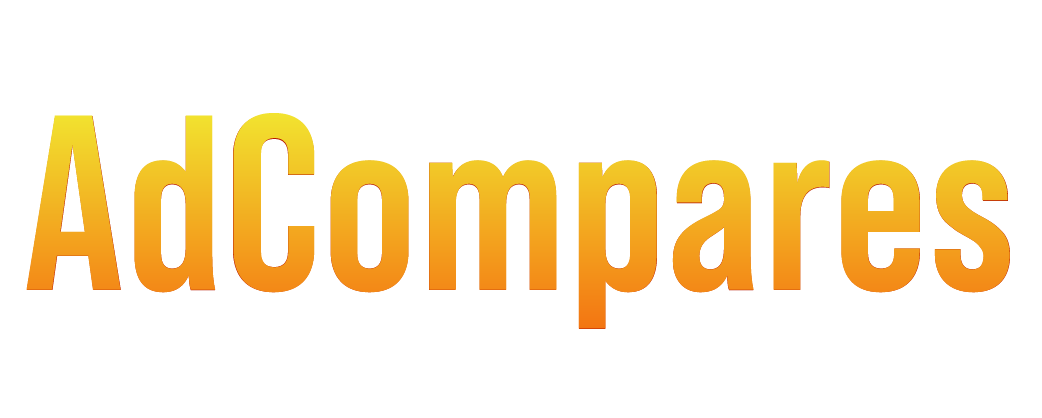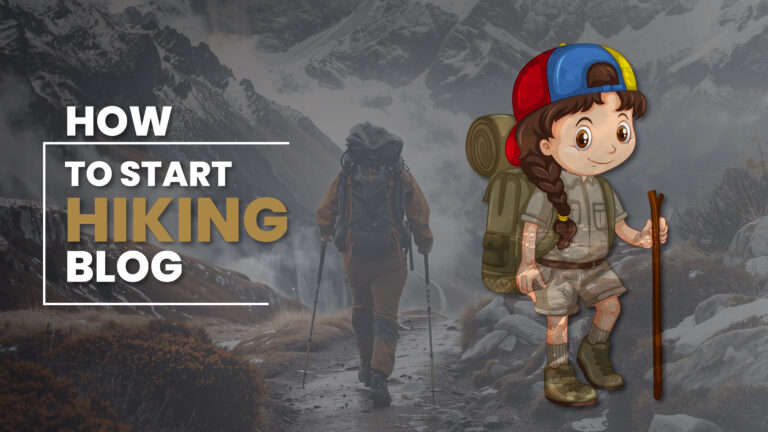A hiking blog is a great way to share your outdoor adventures, connect with a community, and possibly monetize your passion. As of 2025, blogging remains a popular platform, especially within niche markets like hiking. To successfully start a hiking blog, there are several key steps that should be followed. This guide covers every detail, ensuring that you are prepared for all aspects of running a hiking blog.
Essential Steps to Launch Your Hiking Blog in 2025
1. Choose a Niche
To start a hiking blog in 2025, begin by selecting a specific niche. Hiking is broad, and narrowing your focus can help your blog stand out. Popular hiking niches include day hikes, long-distance treks, ultralight backpacking, or hiking with kids. Choosing a niche helps create a targeted audience and makes it easier to produce consistent, relevant content.
Examples of Hiking Niches:
- Long-Distance Trails: Focus on trails like the Appalachian Trail, Pacific Crest Trail, or Camino de Santiago.
- Beginner Hiking Tips: Offer advice for novice hikers, covering gear, trail selection, and basic safety tips.
- Hiking Gear Reviews: Focus on reviewing hiking boots, backpacks, tents, and other essential gear.
- Family Hiking: Share advice on hiking with children or pets.
2. Pick a Blogging Platform
The next step is to select a blogging platform. In 2024, popular platforms include WordPress, Squarespace, and Wix. WordPress remains the most commonly used due to its flexibility, vast plugins, and customization options. For a beginner, platforms like Wix or Squarespace may offer simpler setups with drag-and-drop functionality.
Top Blogging Platforms:
- WordPress: Open-source, highly customizable, and ideal for SEO.
- Squarespace: Easy-to-use interface with visually appealing templates.
- Wix: Beginner-friendly, with an intuitive design.
Selecting the right platform is essential for scalability and user experience.
3. Secure a Domain Name
A domain name is your blog’s address on the web. The domain name should reflect your niche and be memorable. Ensure the domain is available using domain checkers such as Namecheap or GoDaddy. Short, easy-to-spell names are more user-friendly and easier to recall. Choose a domain with a .com extension, as it is the most common and trusted by users.
Tips for Choosing a Domain Name:
- Keep it short (two to three words maximum).
- Make it easy to spell and pronounce.
- Ensure it reflects your niche.
- Avoid numbers or hyphens.
4. Choose a Web Host
Your blog needs a web host to be accessible online. A web host stores your website files and makes them available to users on the internet. Popular hosting options in 2024 include Bluehost, SiteGround, and WP Engine. Ensure that the hosting provider offers good uptime (at least 99.9%), fast loading speeds, and responsive customer support.
Top Hosting Providers for Blogs:
- Bluehost: Affordable and beginner-friendly.
- SiteGround: Excellent support and reliable performance.
- WP Engine: Managed hosting for WordPress sites, providing extra security and speed.
5. Design Your Blog
The design of your hiking blog is the first impression visitors will have. Choose a clean, responsive theme that works well on both desktop and mobile devices. In 2024, mobile traffic accounts for more than half of web traffic, so mobile optimization is critical. WordPress offers thousands of free and premium themes to match your blog’s style. Customize your theme by selecting colors and fonts that reflect your blog’s vibe, whether rugged, natural, or minimalist.
Key Design Elements:
- Mobile-Responsive Design: Ensure your blog looks great on all devices.
- Easy Navigation: Clear menus and organized categories.
- Visuals: High-quality images are vital for a hiking blog, as they showcase your outdoor adventures.
6. Create High-Quality Content
Content is the backbone of any successful blog. Write engaging posts that appeal to your target audience. Focus on providing valuable and actionable information, whether it’s about hiking tips, trail reviews, or gear recommendations. Long-form content (1,000+ words) typically performs better in search engines. Aim to publish content consistently, such as weekly blog posts, to keep your audience engaged.
Types of Content for a Hiking Blog:
- Trail Guides: Detailed guides on specific hiking routes, including difficulty level, distance, and tips.
- Hiking Gear Reviews: In-depth reviews of hiking equipment such as boots, tents, and backpacks.
- How-To Articles: Guides on how to prepare for hikes, pack efficiently, or choose the right gear.
- Photo Journals: Share visually rich stories from your hiking trips, including images and captions.
7. SEO Optimization
Search Engine Optimization (SEO) is crucial for driving traffic to your blog. Without SEO, your blog may remain invisible in search engine results. Optimize your posts with relevant keywords that your target audience is searching for. Use tools like Google Keyword Planner or Ubersuggest to identify keywords related to hiking. Additionally, ensure that your posts have optimized titles, meta descriptions, and image alt tags.
Basic SEO Strategies for Hiking Blogs:
- Keyword Research: Find keywords that align with your niche and audience.
- On-Page SEO: Optimize your headings, meta descriptions, and URLs with relevant keywords.
- Link Building: Reach out to other bloggers or websites for backlinks, which improve domain authority.
8. Promote Your Blog
Content creation is only half the battle; you need to promote your blog to build an audience. Social media is an effective way to reach a broader audience in 2024. Platforms like Instagram, Facebook, and Pinterest work well for hiking blogs due to their visual nature. Share your blog posts, trail photos, and hiking tips on these platforms, using relevant hashtags to expand your reach.
Best Platforms for Hiking Blogs:
- Instagram: Use for sharing high-quality photos and short video clips of your hikes.
- Pinterest: Create pins for your blog posts, as Pinterest is a visual search engine.
- Facebook Groups: Join hiking communities to share your blog and engage with like-minded individuals.
Email marketing is another promotion strategy. Build an email list by offering a freebie, such as a hiking packing list, and send regular newsletters to your subscribers with blog updates and exclusive content.
9. Monetization Strategies
Once your hiking blog has an established audience, you can begin monetizing it. There are several ways to earn money from a blog, including affiliate marketing, sponsored posts, and selling digital products. Hiking blogs are particularly well-suited for affiliate marketing, as hikers are often in search of gear recommendations.
Common Monetization Methods:
- Affiliate Marketing: Earn commissions by promoting hiking gear, clothing, or outdoor equipment.
- Sponsored Posts: Partner with brands to write posts featuring their products.
- Digital Products: Sell downloadable products like eBooks, hiking guides, or packing checklists.
- Ad Networks: Use platforms like Google AdSense to display ads on your blog and earn revenue per click or impression.
10. Essential Tools for Hiking Blogs
There are several tools that can help manage and optimize your hiking blog in 2024. These tools range from content creation and management to SEO and analytics.
Key Blogging Tools:
- Google Analytics: Track your blog’s traffic, user behavior, and audience demographics.
- Yoast SEO: A WordPress plugin that simplifies on-page SEO, helping you optimize each post.
- Canva: Create visually appealing graphics and images for your blog and social media.
- Buffer: Schedule social media posts in advance to maintain a consistent presence online.
11. Legal Considerations
As a blog owner, you need to comply with legal requirements. This includes having a privacy policy and disclaimer on your blog, especially if you are collecting email addresses or using affiliate links. Tools like Termly or FreePrivacyPolicy.com can help you generate these documents.
Track Your Progress
Once your hiking blog is up and running, it’s essential to track your progress. Use analytics tools like Google Analytics or SEMrush to measure your traffic, user engagement, and the success of your SEO efforts. Consistently review which content performs best, and adjust your strategies accordingly.
Metrics to Track:
- Traffic: Measure the number of visitors to your blog.
- Engagement: Look at the average time spent on pages, bounce rates, and user interactions.
- Conversions: Track how many users sign up for your newsletter or purchase products through affiliate links.
12. Engage with Your Audience
Engaging with your audience helps build a loyal community around your blog. Respond to comments on your blog posts, interact with followers on social media, and ask for feedback from your readers. Offering a space for discussion makes readers feel connected and increases the chances they will return to your blog.
Ways to Engage Your Audience:
- Respond to comments promptly.
- Use polls or surveys to ask what content your audience wants.
- Encourage readers to share their hiking stories in the comments or on social media.
Consistency is Key
Consistency is essential for blog success. Develop a content calendar and stick to it. Whether it’s posting once a week or biweekly, having a regular schedule keeps your audience engaged and encourages them to return for new content.
Conclusion
Starting a hiking blog in 2024 involves careful planning and execution. From choosing a niche and securing a domain name to creating high-quality content and promoting your blog, each step plays a vital role in your blog’s success. By focusing on SEO, engaging with your audience, and monetizing effectively, you can turn your passion for hiking into a successful blog that inspires and educates readers.
Frquently Ask Questions(FAQs)
What is the best blogging platform for beginners in 2025?
The best blogging platform for beginners is WordPress due to its flexibility, vast plugins, and SEO capabilities.
How can I monetize my hiking blog?
You can monetize your blog through affiliate marketing, sponsored posts, selling digital products, and using ad networks like Google AdSense.
What is the importance of SEO for a blog?
SEO helps your blog rank higher in search engine results, driving more organic traffic and increasing visibility.
How often should I post on my hiking blog?
Consistency is key, so aim to post at least once a week or biweekly, depending on your content creation schedule.
What social media platforms are best for promoting a hiking blog?
Instagram, Pinterest, and Facebook are effective platforms due to their visual nature and large outdoor enthusiast communities.


No Comments
I am really inspired together with your writing talents and also with the structure on your weblog. Is this a paid theme or did you modify it your self? Anyway keep up the nice quality writing, it’s uncommon to look a nice blog like this one today..
Your comment is awaiting moderation.